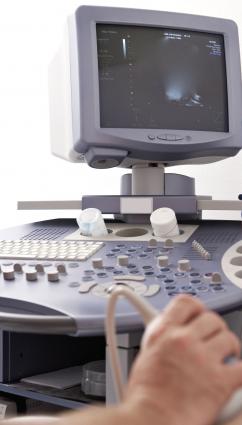Ultrasound Guided Injections: Relief from sport injuries to arthritis
“Ultrasound is a safe and effective way to examine the musculoskeletal system of the body to detect problems with muscles, tendons, ligaments, joints and soft tissue both with static and dynamic imaging techniques without the need for x-ray radiation”
What is an ultrasound guided injection?
An ultrasound guided injection is an injection of anesthesia, cortisone or a mixture of both into the area of your body that is painful. 3D High Definition Ultrasound dynamic images are used by your doctor to locate where the needle should enter the skin. Next, the medication will be injected under the live ultrasound images (4D) showing the exact distribution of the medication in the right place. This injection relieves acute or chronic pain and treats musculoskeletal swelling.
Why do I need an ultrasound guided injection?
The 3D/4D Ultrasound live images allow your surgeon to precisely locate the site where the injection is to be made and to see the exact distribution of the medication under direct live vision. These injections may be used to relieve pain from some sport or degenerative conditions (arthritis, tendinitis, bursitis, neuritis).
What do I need to do before the ultrasound guided injection?
Continue taking all your medications unless your doctor gives you different instructions. You may need to stop taking blood thinners (Sintrom, Heparin, Lovenox, Aspirin, Plavix). It is important to discuss this with your doctor before scheduling your injection.
What happens after the injection?
After you get the injection, you will be able leave the hospital as soon as you can stand and walk. It is best to have someone with you to help you get home.
What should I do when I get home?
Keep the injection site clean and dry for at least 24 hours. There will be a bandage over the area where you had the injections. The site may be sore. You can use either ice-packs or pain killers to help with the pain. Remember, you had an injection of anesthesia. This means you may still be numb and not feel pain in that area. The anesthesia should wear off in 1-6 hours. Pain you felt before your injection may return and could be slightly worse for a short time. If you had cortisone injected, it usually begins to work 2-3 days later. It may take as long as one week for the steroid to work, depending on where you received the injection. Limit activity for 1-2 days. It is important to follow these instructions even if you are no longer feeling pain.
WARNING IF YOU HAVE DIABETES:
Cortisone increase blood sugar. This may make it more difficult to control your sugar levels. If you take medication for your diabetes, this medication may not control your sugar as usual. High blood sugar can cause an infection. It is important that you check your blood sugar level more often for several weeks after your injection. If your sugar level is high, call your diabetes doctor right away. Your doctor may need to give you medication or adjust your medication to help manage your blood sugar.
What are some side-effects of the injection?
- Flare Response : Cortisone may cause swelling, redness and warmth in the area they were injected. This will usually go away within 1 day. You may take any non-steroidal anti-inflammatory agent to calm it but ask your doctor how much you can take and how often. Ice-packs may also help lessen the swelling at the injection site.
- Skin Changes : The skin near the injection site may change color a month or more after your injection. The skin may also look and feel different. These skin changes are very rare.


